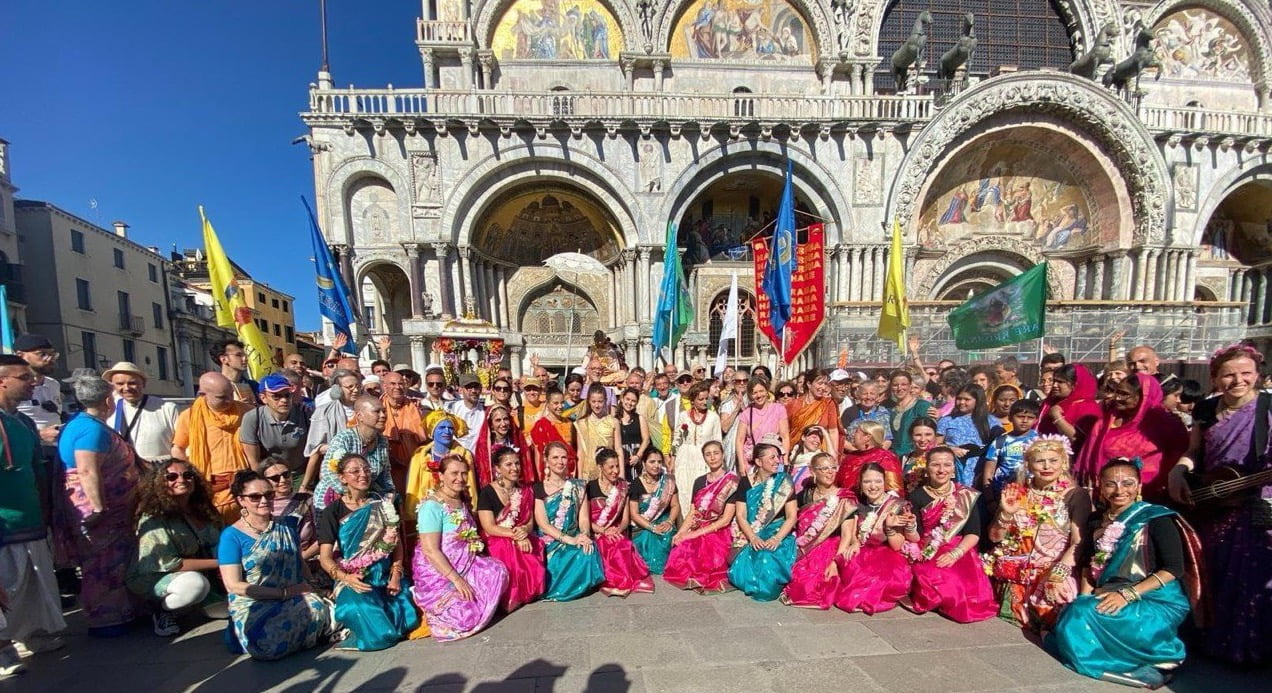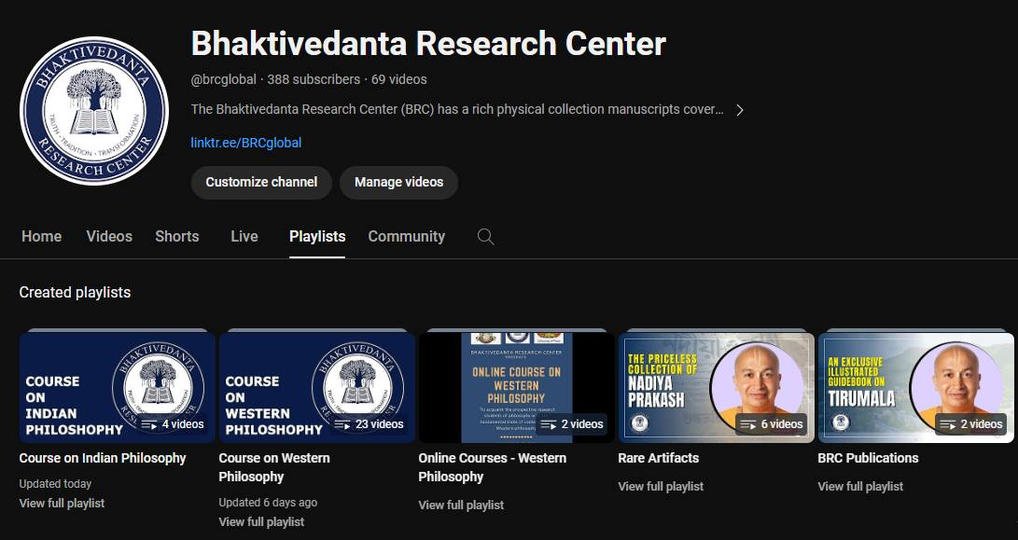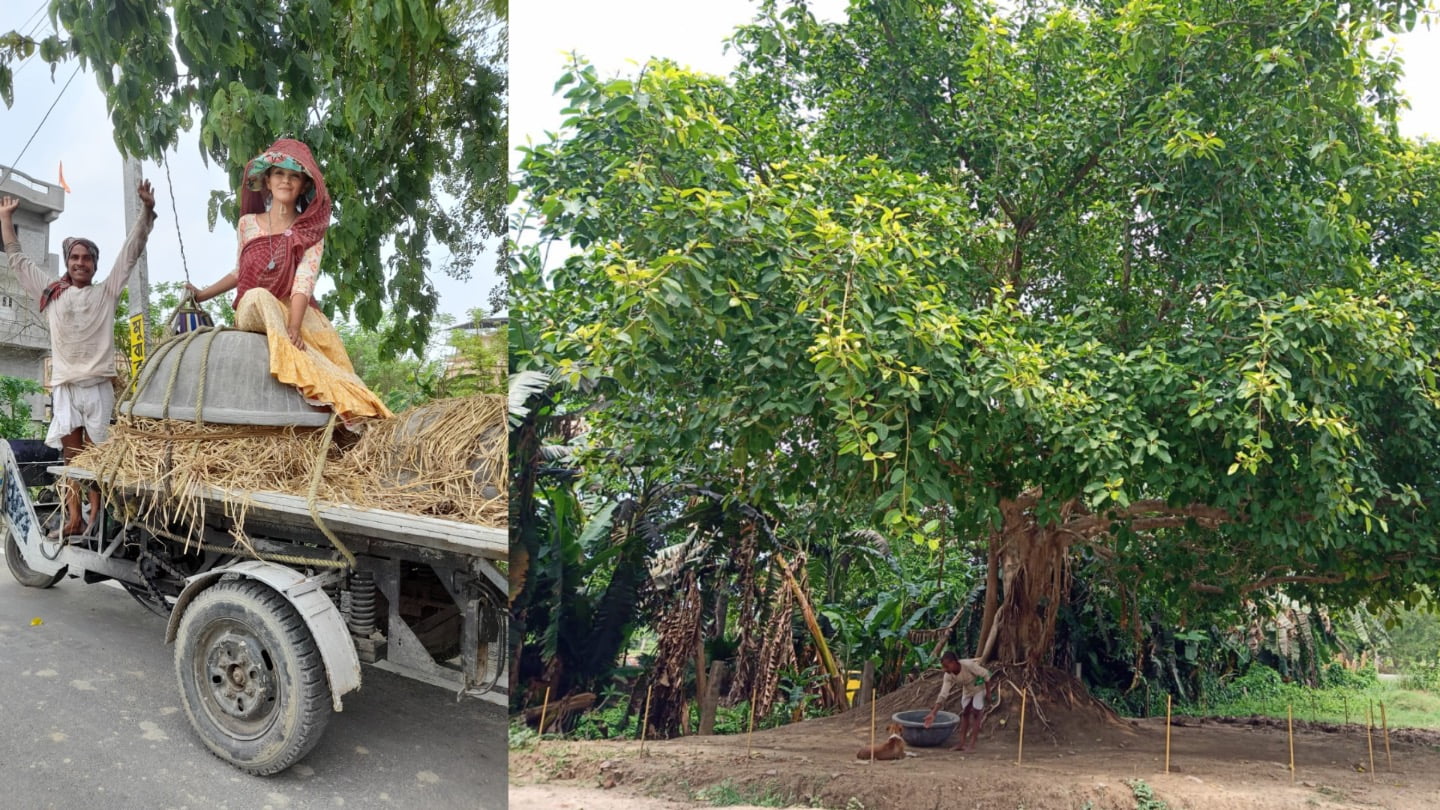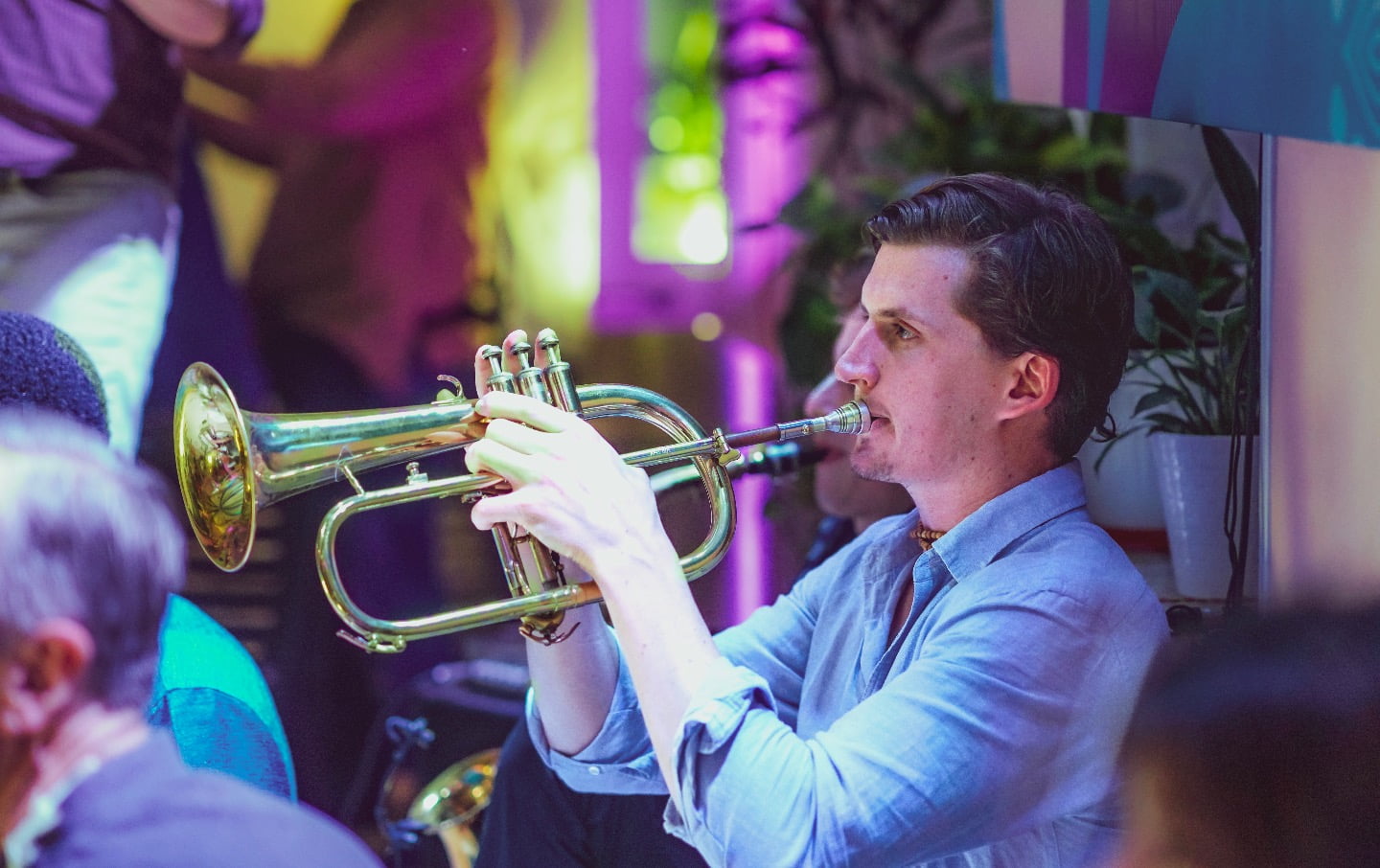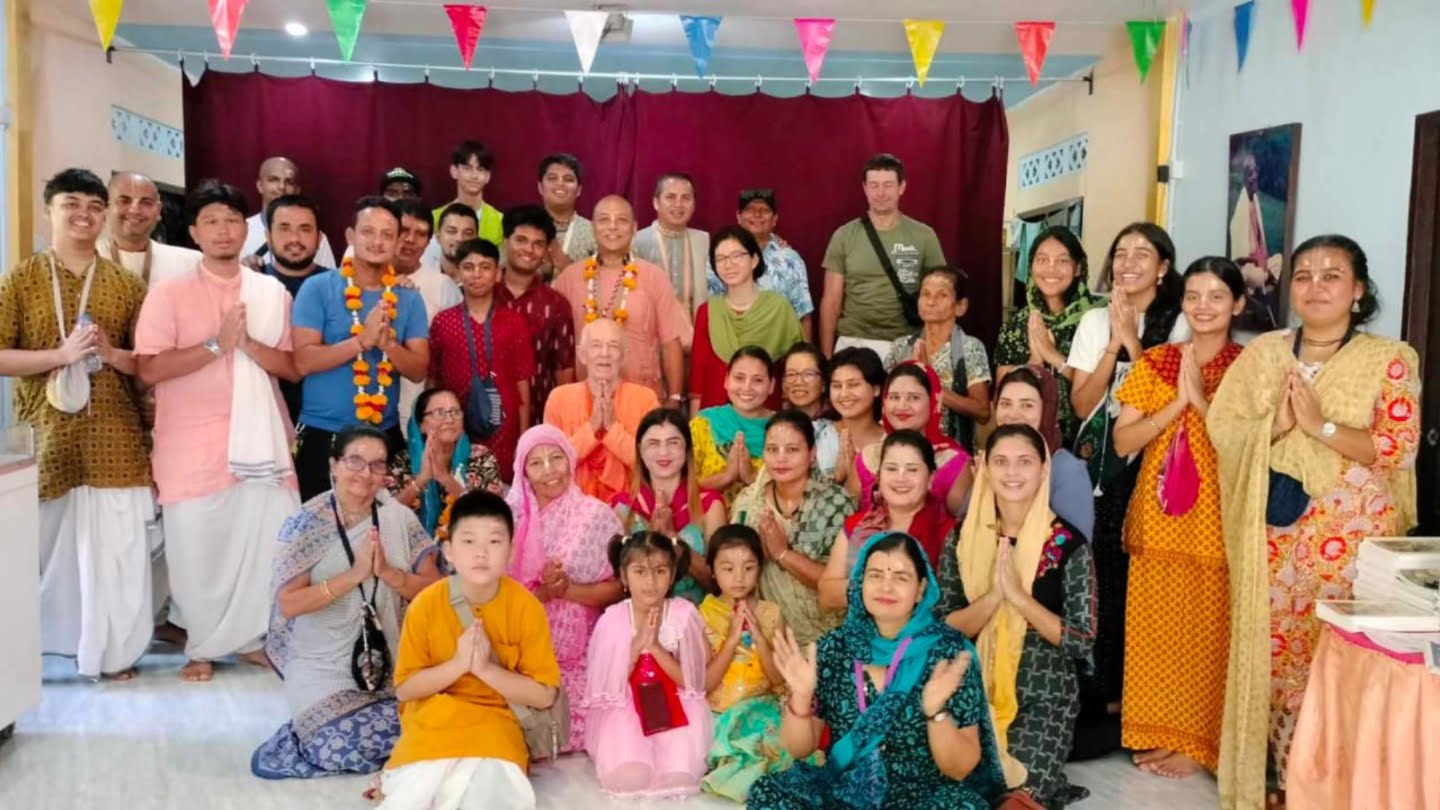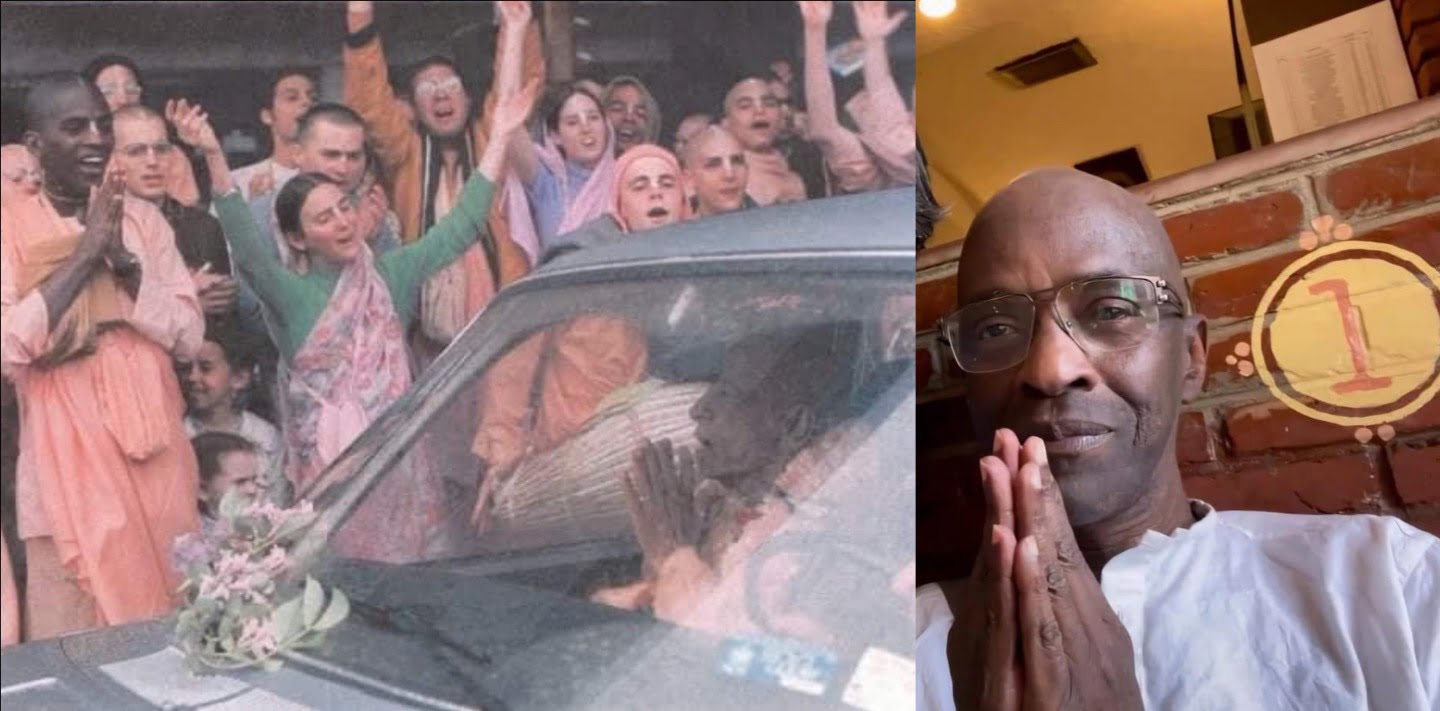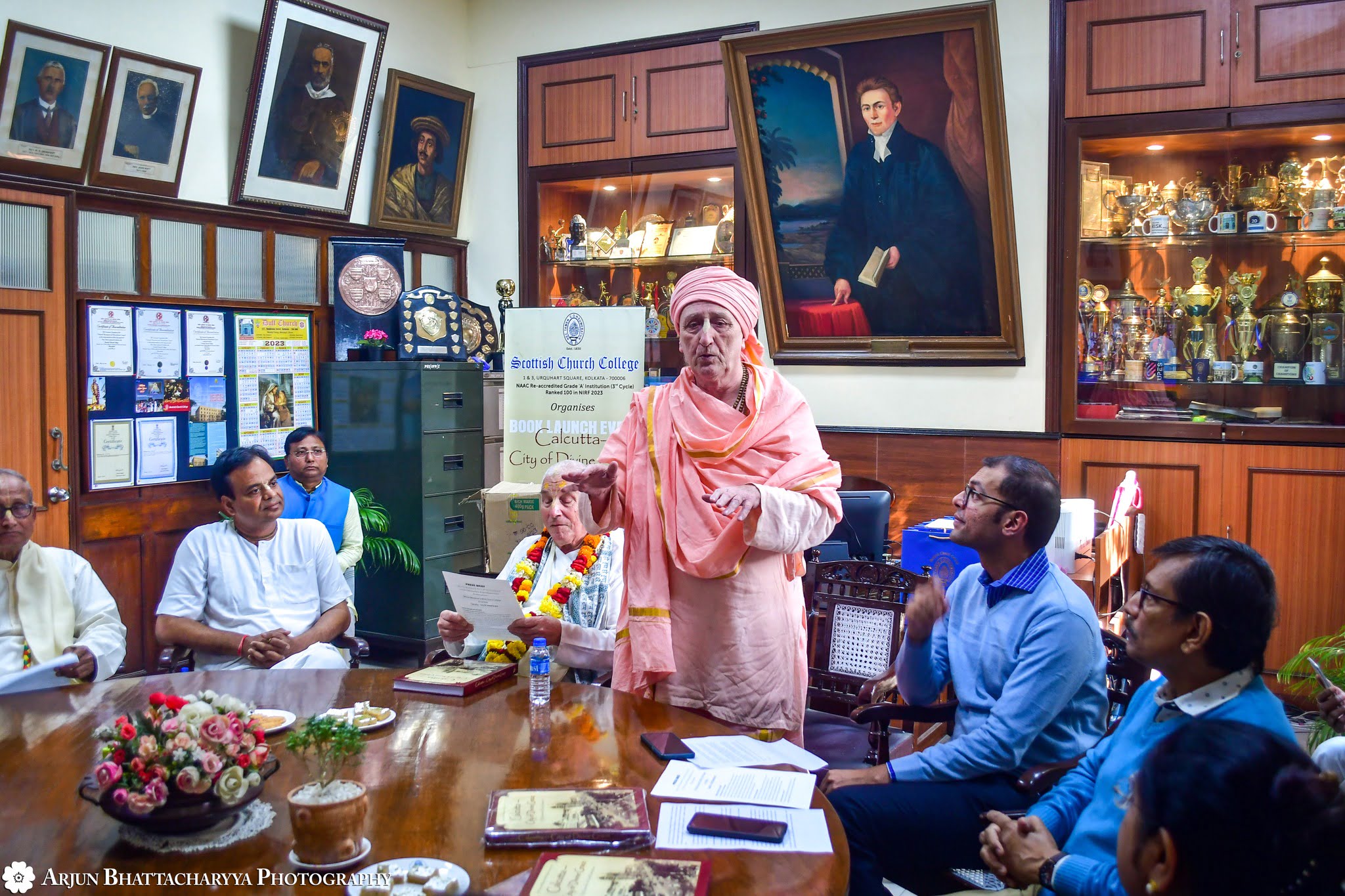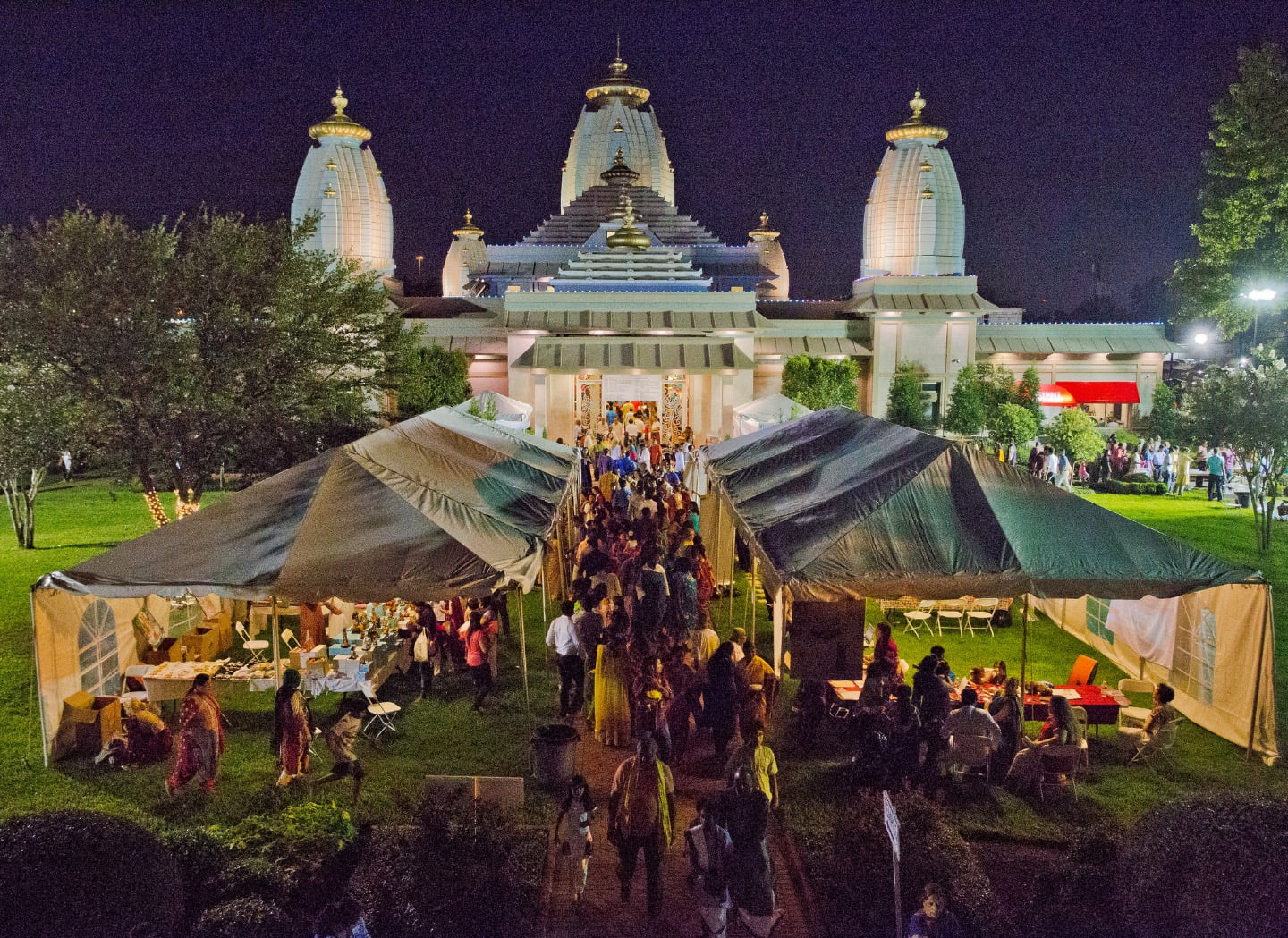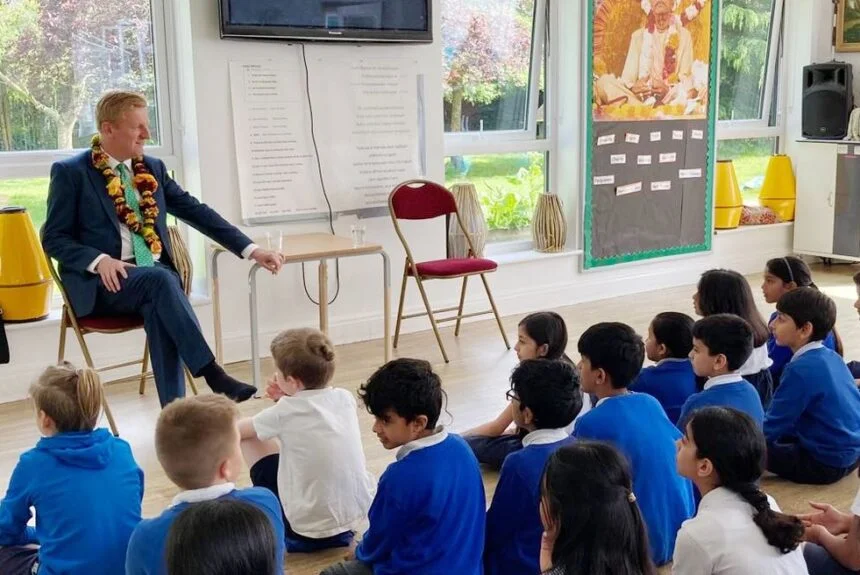Explorers Feel Holy Name’s Magic on 7th Ganga River Adventure
By Madhava Smullen | May 25, 2013
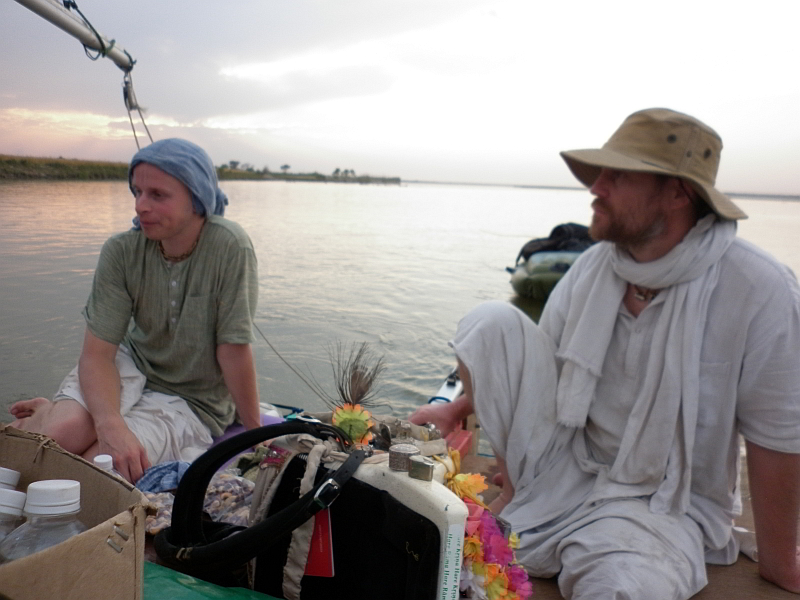
A group of intrepid devotee explorers headed out on their 7th annual journey down the sacred Ganga river from April 10th to 24th this year, spreading the Hare Krishna mantra and having a rollicking adventure along the way.
Mahavishnu Swami from the UK, Sanak Sanatana Das from Germany, Parasurama Das, director of the UK’s Food For All charity, Arjun Das from Russia and his wife Krishna-Mayi Dasi all participated in the two-week journey.
The idea for the Ganga River Adventure came to Parasurama in 2006 while he was following the annual Vraja Mandala pilgrimage in the sacred land of Vraja, Uttar Pradesh. He has now done the pilgrimage with his bullock cart for the past twenty-six years.
“At one point we had to get from one side of the Yamuna river to the other, and there were no bridges,” he says. “Fifteen of us were pushing the cart across the Yamuna. And I thought, ‘What if we were to actually float down the Yamuna? What would that be like?’”
Parasurama consulted a map, decided on a Ganga trip instead, and had a catamaran made. Consisting of two inflatable “bananas,” a raft-like platform and a sail, the boat could float in ten inches of water and was ideal for navigating the shallow parts of the river. It was a very stable and practical craft, and could be assembled and taken apart very quickly.
With the catamaran secured, Parasurama then gathered his crew and made the 1,800 kilometer trip from Vrindavana in Uttar Pradesh to Mayapur in West Bengal.
The trip took one month. Raising both spiritual and environmental awareness about the Ganga, it was a major success. The devotees were hooked. They have made the journey every year since.

Devotees pass out prasadam to children on their route
This year, Parasurama and his crew traversed the only stretch of the Ganga they hadn’t explored yet. A smaller trip—around 300 kilometers—their route took them from Aligarh to Kanpur in Uttar Pradesh.
Along the way they visited many holy places, including Kannauj, the home town of Ajamila. A famous devotee described in the sacred text Srimad Bhagavatam, Ajamila fell into material life but was saved and brought to the spiritual world when he called the name of his son, Narayan, at the time of his death.
The devotees also visited Bithoor, where the sage Valmiki, author of the ancient epic Ramayana, once made his ashram. There, Lord Rama’s wife Sita Devi stayed with her sons Luv and Kush.
And of course, the adventurers ended their journey in Kanpur, the former kingdom of Maharaja Uttanapada, the father of the great boy devotee Dhruva.
Before arriving at each town, the devotees would notify the local newspapers, who would meet and interview them about their spiritual message. They would then perform Harinam in the town using their solar-powered sound system, and distribute Srila Prabhupada’s books along with packaged prasadam snacks.
“People loved it,” Parasurama says. “In India, they still have that kind of culture. You can go anywhere you like, do kirtan in the middle of a village, town or marketplace—even in people’s shops—and they’ll love the chanting.”
Prasadam and books were also distributed to people who were bathing in the Ganga or gathered on her banks for funerals.

Mahavishnu Swami reads about the life of Haridas Thakura while sailing down the Ganga
“Everywhere you go, you see funerals going on, because there are so many people in India,” Parasurama says. “It’s a good time to give people books, because they’re quite sober and open to spiritual life.”
Occasionally devotees would also give prasadam and books to farmers as they swam from the mainland to islands where they grew vegetables.
Sometimes people would run along the banks of the Ganga, trying to keep up with the catamaran as devotees passed them books and prasadam on the move.
While previous years’ Ganga journeys took up to a month, this year’s took only two weeks, due to fast winds.
“We were doing about seventy kilometers a day,” Parasurama says. “We were flying along. People thought we had a speedboat or something, we were going so fast.”
In between stops, Mahavishnu Swami would read to the other devotees from Rupa Vilasa Dasa’s new book Namacharya: The Life of Srila Haridas Thakur, about the great saint who taught the chanting of the Hare Krishna mantra.
Together, the devotees would also chant mantras in praise of the Ganga, or read from Jaya Vijaya Dasa’s book Mother Ganga about the different holy places they were visiting.

Mahavishnu Swami speaks to news reporters about his Krishna conscious mission
Every evening, the crew would dock at an island in the Ganga just as dark fell, to avoid dacoits. They would then camp out on the sand.
“We called the islands ‘million star hotels,’” Parasurama says. “They were so beautiful. There was no noise, just peaceful golden sandbanks.”
In the morning, the devotees would go on a ‘japa walk,’ chanting Hare Krishna and collecting any pieces of wood they could find. They would then make a fire and cook kichari and chapatis to last them for the day.
To add variety to their meals, they would sometimes pick fruit, or cook vegetables donated by farmers. To drink, they would filter Ganga water.
After cooking in the mornings, they would continue on their way, holding their morning prayers on the catamaran. During the day, they would pull in somewhere to wash their clothes.
This simple lifestyle allowed the devotees to be more renounced and to rely completely on Krishna.
“The Bhagavad-gita talks about how a sannyasi should be ‘Abhay,’ or fearless,” Parasurama says. “Traveling, you don’t know where you’re going to stay, or what you’re going to eat. Sometimes you can run into heavy storms, wind and rain.You don’t know what’s going to happen next.”
There’s danger at every step on the Ganga River Adventure. Once, while collecting wood for a cooking fire, Parasurama was unable to move a piece of wood which was stuck in the ground. So he stacked the rest of his wood around it and built a fire on the spot. As he was cooking his kichari, however, a snake suddenly emerged and began chasing him.
“It was pretty scary!” he says. “You’re cooking away, and the next thing a huge snake comes out of the fire. Fortunately I escaped and he slithered into the river.”

The intrepid Mahavishnu Swami and his Bhagavad-gita display hat
At other times, the devotees were sobered at the sight of many dead bodies floating down the river—some deposited there after death, some drowned.
“The last night we stayed, there was a skeleton on the ground only about twenty meters from our tent,” Parasurama says. “And there were three dogs eating a dead man.”
These horrors brought the devotees deep realizations about the mortality of the material body. However, magical Krishna conscious experiences where also common.
On one occasion, the Ganga river explorers were caught in a heavy rainstorm. Darkness was falling, and they had been warned about crocodiles in the area. They had to find shelter somewhere, and quickly.
Then they spotted a light in the distance. Paddling over to it, they began to hear singing. To their surprise, it was the Hare Krishna mantra. Docking and climbing onto the bank, they discovered a 138-year-old sadhu with long, matted hair and beard, dressed only in a loincloth.
“He looked like Srila Vyasadeva,” Parasurama says. “It turned out that he was a follower of Sri Chaitanya Mahaprabhu, and was holding a 24-hour kirtan. He welcomed us, and we stayed there for two nights, taking shelter from the rain.”
Another time, the adventurers found themselves in an even worse thunderstorm, lightning flashing all around them. Wind and rain slammed into the little boat, propelling it down the river. As night fell, they wanted to stop, but couldn’t, as the driving rain was causing the 14-foot-high sandbanks to collapse and tumble into the river.
Finally, at midnight, the wind slowed just enough for them to pull over. And right there, where they docked, was a small temple. In the temple was a sadhu (renunciant) in the line of Shankaracharya (an impersonalist philosopher).
“He knew we were coming, from the newspapers,” Parasurama says. “He took us in and cooked for us. And the funny thing about it was, he wasn’t really an impersonalist. He told us, ‘I’m initiating in the Shankaracharya line, but to be honest, I’m actually a devotee of Krishna!’”
For Parasurama, the peaceful, simple, rural life that still exists on the Ganga is a glimpse of the ‘real India.’ And traveling in a natural, technology-free way, while associating with devotees, distributing prasad and Srila Prabhupada’s books, and living off the Ganga rejuvenates his taste for spiritual life.
“Now, not a single day goes by that I don’t remember the Ganga,” he says. “It’s just ingrained in my mind. That’s a great benediction.”
Parasurama plans to keep doing his river adventure every year, learning to live simply and spreading Krishna consciousness in the process.
“Since most of the rivers in India are holy, we might start going down different rivers, too!” he says.





